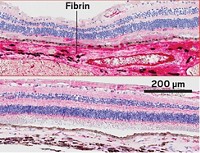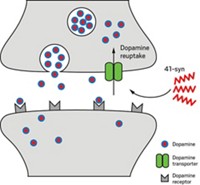Advertisement
Grab your lab coat. Let's get started
Welcome!
Welcome!
Create an account below to get 6 C&EN articles per month, receive newsletters and more - all free.
It seems this is your first time logging in online. Please enter the following information to continue.
As an ACS member you automatically get access to this site. All we need is few more details to create your reading experience.
Not you? Sign in with a different account.
Not you? Sign in with a different account.
ERROR 1
ERROR 1
ERROR 2
ERROR 2
ERROR 2
ERROR 2
ERROR 2
Password and Confirm password must match.
If you have an ACS member number, please enter it here so we can link this account to your membership. (optional)
ERROR 2
ACS values your privacy. By submitting your information, you are gaining access to C&EN and subscribing to our weekly newsletter. We use the information you provide to make your reading experience better, and we will never sell your data to third party members.
Environment
Trying To Untangle Alzheimer’s
July 27, 2015
| A version of this story appeared in
Volume 93, Issue 30
“Alzheimer’s Next Chapter” by Lisa Jarvis highlights the lack of consensus regarding the primary mechanism of neurodegeneration in Alzheimer’s disease (C&EN, June 1, page 11). This is a significant problem because understanding the causal mechanism of a disease process provides a rational platform for drug development.
Unfortunately, the Alzheimer’s field is dominated by two exclusive ideological factions—tauists and βaptists. In our opinion, this situation has impaired the search for effective pharmacotherapies. The myopic focus on the amyloid-β plaques and neurofibrillary tangles is dangerous and frankly unwarranted, since the presence of protein anomalies does not necessarily indicate pathogenic significance.
In this regard, it is noteworthy that some evidence suggests that the tangles and plaques are of secondary pathophysiological importance. Regardless, the failure to adequately consider alternative mechanisms can prematurely narrow the field of hypothesis testing.
Initial studies in the field of Alzheimer’s disease neuropathogenesis identified nerve terminal dysfunction and defective mitochondrial bioenergetics coupled to oxidative stress as early consequences of Alzheimer’s. Whereas some might consider these to be outdated parameters, the resulting changes in central nervous system neurotransmission represent a plausible basis for the cognitive deficits that characterize the disease.
Based on the probable complexity of Alzheimer’s neuropathogenesis, it is clear that the molecular process of Alzheimer’s disease neurodegeneration is highly complex and, as Genentech’s Carole Ho points out, the most effective approach will likely involve combination therapy.
Richard M. LoPachin
Bronx, N.Y.
Terrence Gavin
New Rochelle, N.Y.




Join the conversation
Contact the reporter
Submit a Letter to the Editor for publication
Engage with us on Twitter